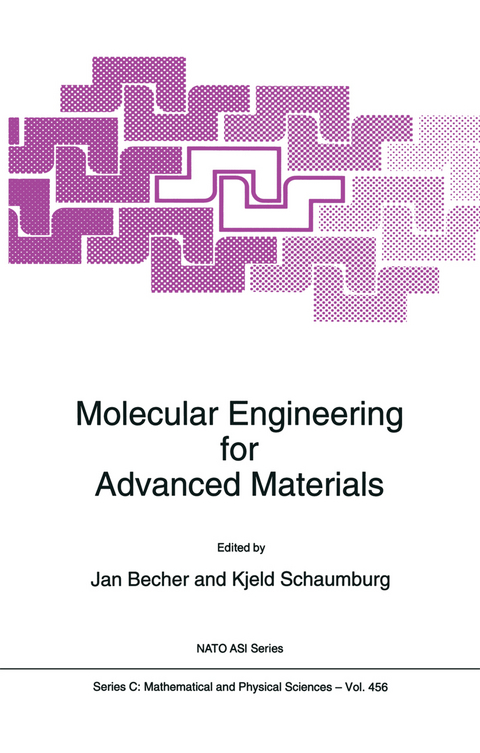
Molecular Engineering for Advanced Materials
Springer (Verlag)
978-90-481-4521-8 (ISBN)
Another aspect is the transition from supramolecules to materials. At present no single molecule (however large) has been demonstrated to function as a device, but this appears to be only a matter of time. In all of this research, which has a strongly multidisciplinary character, both existing and yet to be developed analytical techniques are and will remain indispensable.
All this and more is discussed in Molecular Engineering for Advanced Materials, which provides a masterly and up to date summary of one of the most challenging research fields to emerge in recent time.
The Self-Assembly of Redox-Active and Photo-Active Catenanes and Rotaxanes.- Advantages of the Rotaxane Framework for the Construction of Switchable Molecular Devices.- The Polyrotaxane Architecture. A New Approach to Molecular Engineering.- “Smart” Cascade Macromolecules.- Tailoring Cyclodextrins for the Construction of Large Scale Scale Molecular Assemblies.- Cation and Anion Coordination Chemistry of Redox Active Calixarene Macrocyclic Ligand Systems.- Functionalization and Application of Calixarenes.- Design Principles for Engineering Conducting Discotic Liquid Crystals.- Organic Synthesis and Materials Science.- New Aspects of Heterocyclic Annulene Chemistry.- Electrochemical Properties of Fullerenes and Fulerene Derivatives: A Possible Route to Endohedral Complexes.- Photoinduced Electron Transfer in Bis-Porphyrin-Stoppered [2]-Rotaxanes.- New Materials Based on Highly-Functionalised Tetrathiafulvalene Derivatives.- Design, Synthesis and Properties of Exotic Tetrathiafulvalenes.- Novel TTF Derivatives as Components for Conducting CT Complexes.- Tetrathiafulvalenes with Extended Conjugation.- Giant Analogues of Tetrathiafulvalene: Outcome and Prospect.- Unsymmetrically-Substituted Tetrathiafulvalenes (TTF) as Key Intermediates in the Preparation of Functionalised TTF Derivatives.- From Molecular Structures to Solid State Properties in ?-Charge Transfer Salts.- New Bimetallic Tetrathiafulvalene Building Blocks and Self-Assembled, Two-Dimensional Conductors Derived from Regioregular, Head-to-Tail Coupled Polythiophenes.- Author Index.
| Erscheint lt. Verlag | 15.12.2010 |
|---|---|
| Reihe/Serie | NATO Science Series C ; 456 |
| Zusatzinfo | XX, 376 p. |
| Verlagsort | Dordrecht |
| Sprache | englisch |
| Maße | 160 x 240 mm |
| Themenwelt | Naturwissenschaften ► Chemie ► Anorganische Chemie |
| Naturwissenschaften ► Chemie ► Organische Chemie | |
| Technik ► Maschinenbau | |
| ISBN-10 | 90-481-4521-X / 904814521X |
| ISBN-13 | 978-90-481-4521-8 / 9789048145218 |
| Zustand | Neuware |
| Haben Sie eine Frage zum Produkt? |
aus dem Bereich


